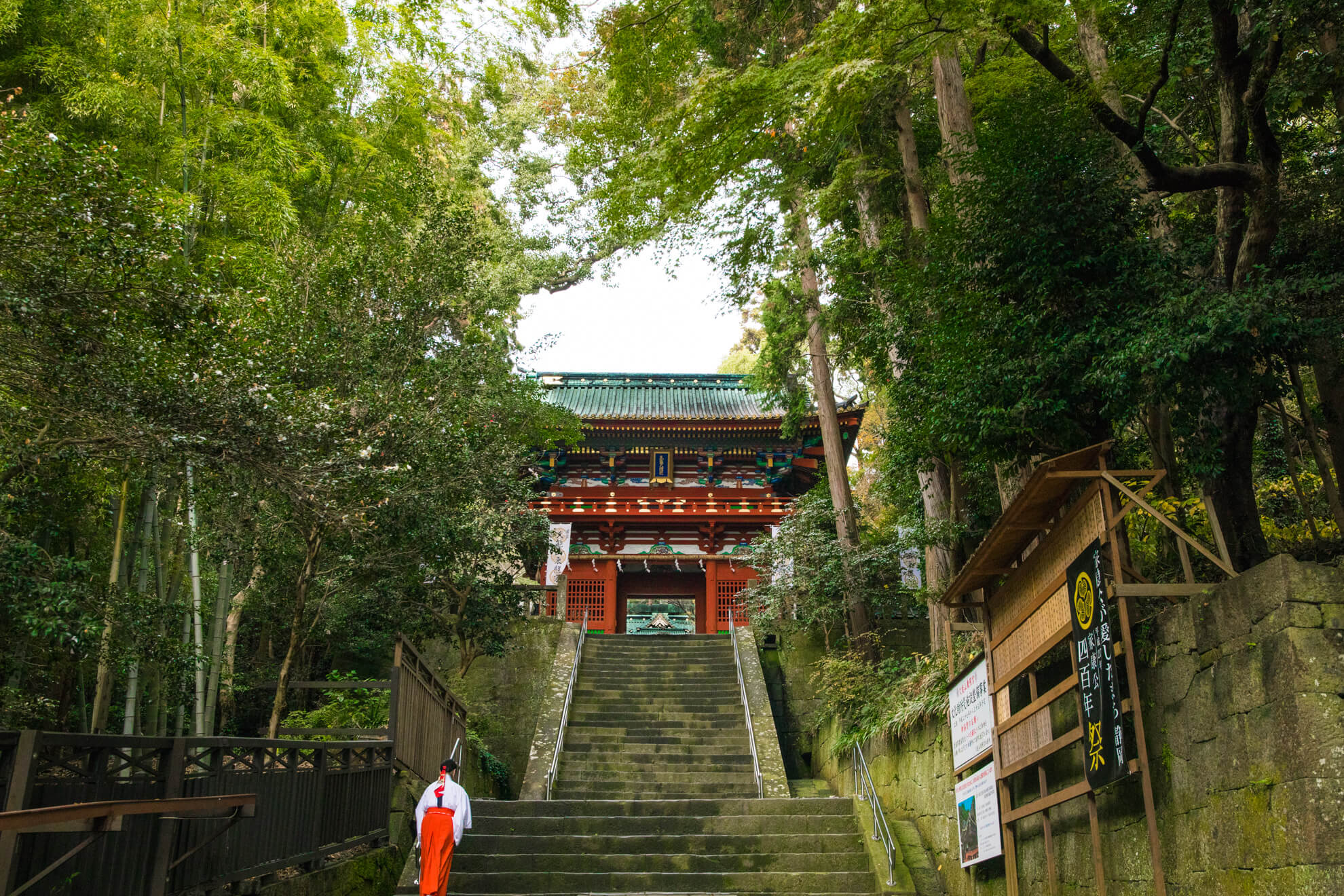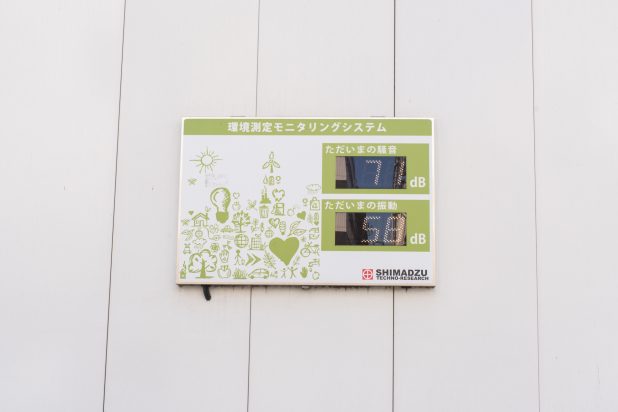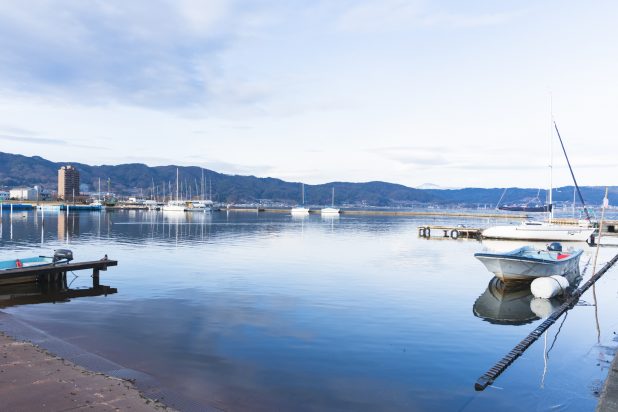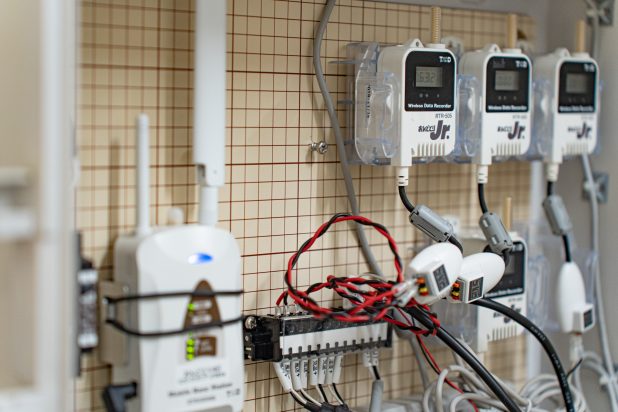Note: Names of organizations, offices, departments, etc. in the article are as of when the article was first published.
Kunōzan Tōshō-gū Shrine in Shizuoka City, Shizuoka Prefecture, built for enshrining Tokugawa Ieyasu as its main deity, was the first of the Tōshō-gū Shrines built in Japan.
We got word that T&D products were being used to monitor and manage temperature and humidity in exhibits at the museum attached to the Kunōzan Tōshō-gū Shrine and decided to find out more.
We sat down and talked with Ms. Miyagijima, a curator and licensed Shinto priestess, who is in charge of of data logging for the museum.
| Date | December 04, 2018 |
|---|---|
| Place | Kunōzan Tōshō-gū Museum in Shizuoka Prefecture |
| Models in Use | TR-72Ui (14 units) |
| Purpose | Temperature and humidity management of museum materials and exhibits |
Q: First of all, can you tell us a little about Kunōzan Tōshō-gū Museum?
The museum houses about 2000 pieces, including personal items of Tokugawa Ieyasu, as well as a large collection of swords and armor from throughout the period of the Tokugawa shogunate. We have probably the most extensive collection of armor from successive generations of anywhere in Japan.
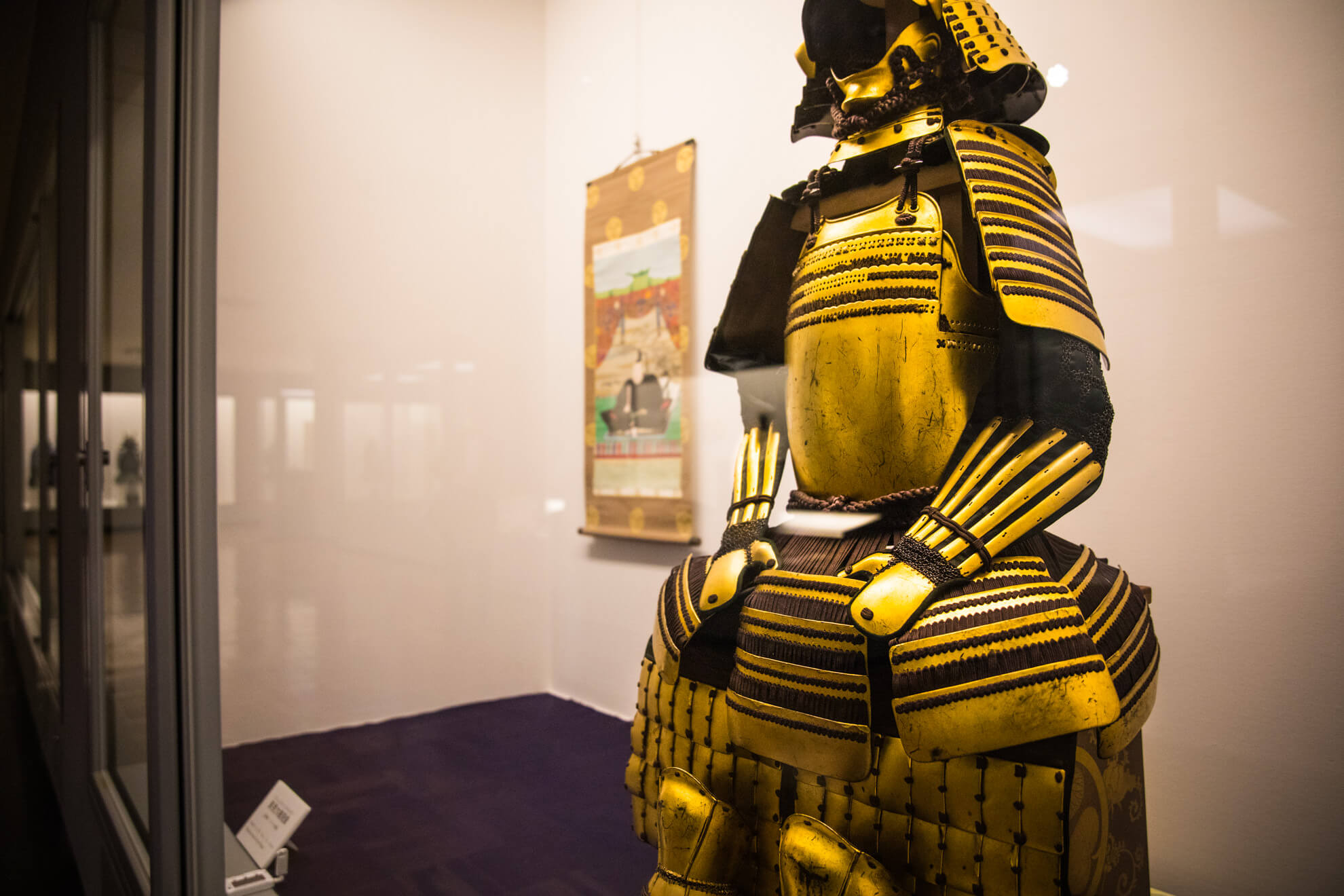
Q: How did the all of these important historical pieces from Ieyasu and the armor come to be here?
All of the pieces were given over as offerings to the shrine at the time of its construction. While still alive, Ieyasu willed that, after his death, he wished his body to be buried at Kunozan and one year later, his spirit to be divided between Kunozan and Nikko. Upon his death and according to his will his body was buried in Kunozan on the day of his death, and history says that the construction of the main shrine in Toshogu Shrine began soon after at the order of the second Shogun Hidetada. It is said to have taken just 1 year and 7 months to complete, which in those days was incredibly quick.
Besides various belongings divided up between his children and concubines, some of his belongings were given to Kunozan and it is these items that were dedicated to the shrine at the end of construction. Before being stored at the museum, they were kept in a treasure house next to the main shrine.
Almost all of the 63 pieces of armor at the museum had been stored during the Edo period inside a treasure house in the Momijiyama section of Edo Castle. At the fall of Edo 150 years ago, the Tokugawa family had everything brought to Shizuoka and everything was handed over to Kunozan Shrine.
Q: What other items of note are on display here at the museum?
There are many paintings and calligraphic works brought here by the family at the beginning of Meiji. They include calligraphy and paintings done by the shogun himself. In addition we have an outstanding collection of about 50 swords that were dedicated during a large festival that took place once every 50 years at Toshogu Shrine, as well as, swords that were dedicated in commemoration of the appointment of successive shogun.
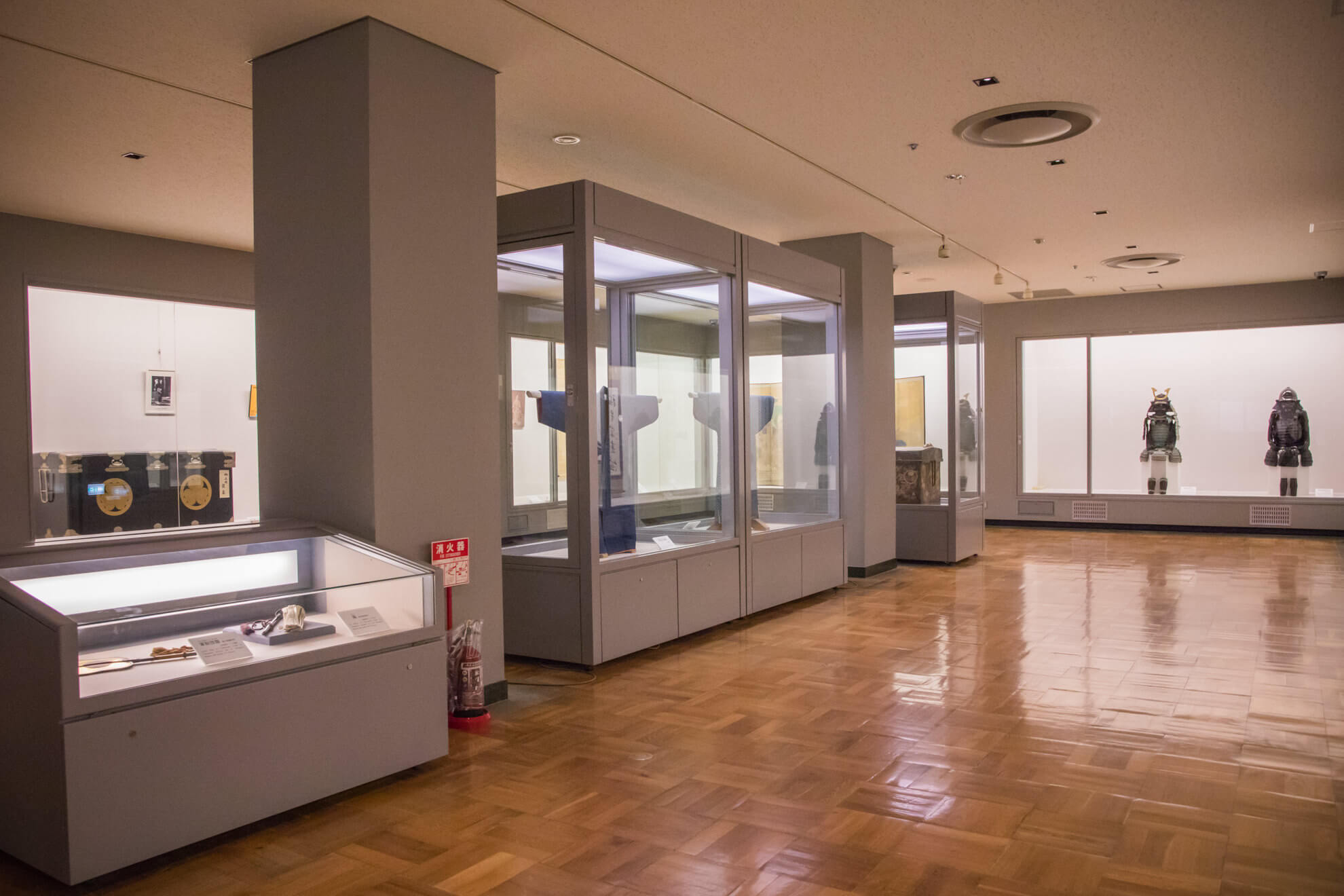
Q: I am glad you brought up the swords. I noticed there was a display, at the entrance, of a game using anime characters with swords. Does the museum often collaborate with historical manga and anime based games?
Oh, the panel shows an anime character based on Ieyasu’s most beloved sword. Until recently we hadn’t done anything like that. But, in 2017 when we held an exhibition of our collection at the Miyazaki Prefectural Art Museum we collaborated with the very popular anime video game “Touken Ranbu” and had illustrations drawn for the exhibit as well as collectible goods based on the anime game. So we made a connection then and that led to our crowd funding project.
Q: What kind of crowd funding project?
Well, in September 2017 we discovered eight swords hidden away in the treasure house that I spoke of earlier. The problem was they were terribly rusty and in bad shape. So we started a project to raise money in order to get the swords cleaned and polished, so that they could be displayed in the museum. The company behind “Touken Ranbu” agreed to give us their full support.
As you know, with crowd funding you need to give back some kind of return items to match donations. We were able to offer the anime character based goods and that led to an overwhelming response. We set a goal of 5,000,000 yen (about 45,500 US dollars) and amazingly reached it within 7 hours!

―― Wow, that IS amazing!
Yes, we were all really surprised! But even more surprising was that at the end of the campaign in March 2018 we had collected more than 29,000,000 yen (260,000 US dollars)! That was just amazing! I still have trouble believing it!
And with all of that support we were able to repair all the swords. Even the horribly rusted ones were skillfully polished clean!
That is the story behind the “Touken Ranbu” panel you saw at the entrance. Until this we had had support for exhibits from businesses and other museums, but this was the first time to work in collaboration with an anime or game company.
Q: Have you seen any changes from before and after the crowd funding campaign and connection with anime?
Absolutely. After the character in the game was based on Ieyasu’s beloved sword, we had many people calling up and asking if it was in the museum. We had so many inquires that we decided to put it on display and we were literally overwhelmed by the crowds of young women in their twenties and thirties who came to see it and buy the pictorial booklets. Until then the only people who came to see the sword exhibit were elderly men, but thanks to “Touken Ranbu” we were able to reach a wider audience.
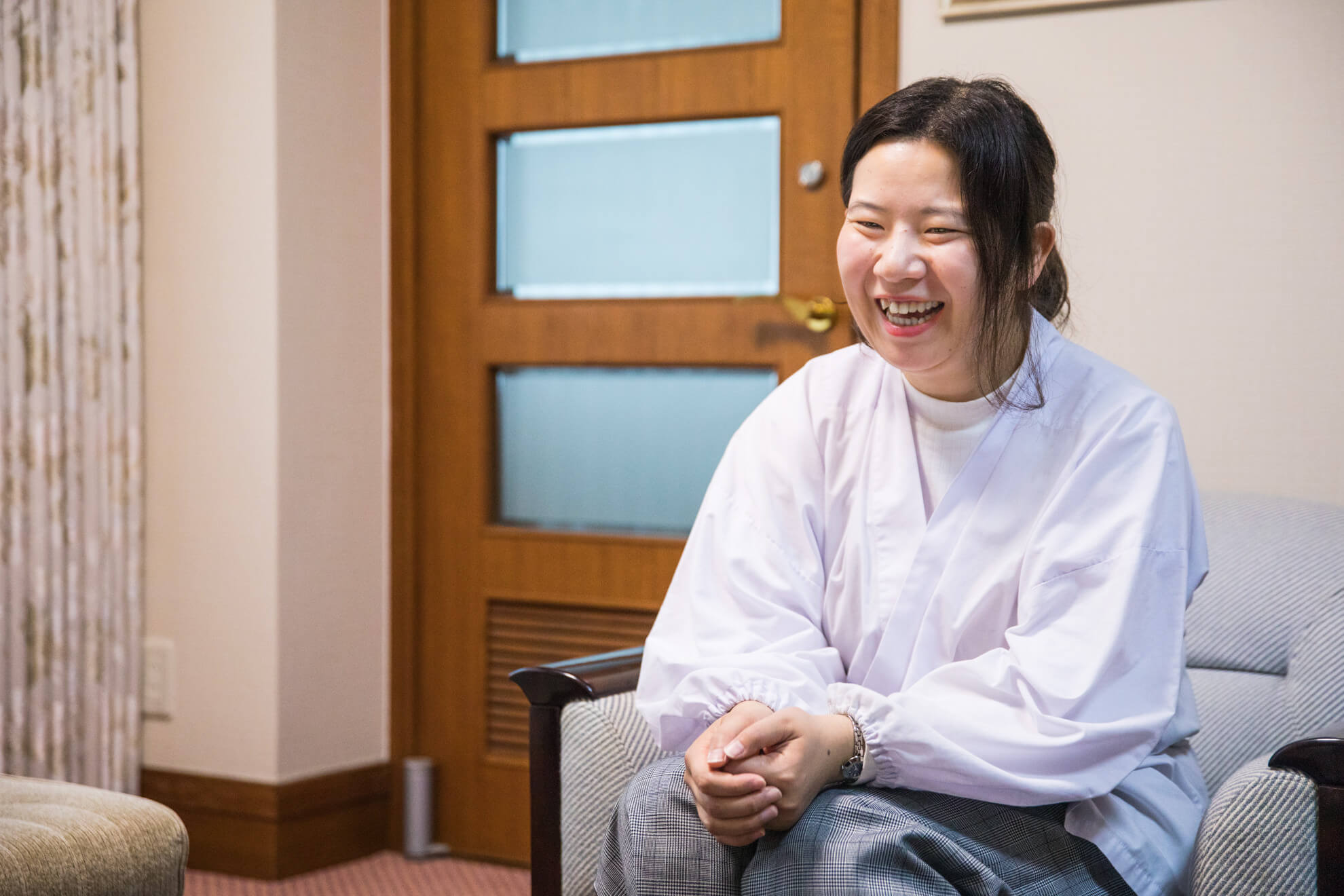
―― So it seems like crowd funding is a great way to help protect and preserve historical property and cultural assets.
Yes, I guess it depends on how the project is designed. I am not sure that all types of preservation work can be done by it. But I have heard of other projects for restoring famous swords in various places and raising money to display superior swords in hometowns of sword makers. And I have heard of crowd funding being used in relation to other cultural properties other than swords; I would say it may be one good way to get the public interested.
Q: In connection with preservation and protection of historical properties and cultural assets, can you tell us a little about why you decided to invest in our data loggers?
About five years ago we closed the main museum building for renovation and repair of the lighting and air conditioning systems. At that time it was necessary to track the temperature and humidity and carry out an environmental survey. So a data logger was in placed in each display case for the regular measurement and logging of temperature and humidity data. We needed some instruments to measure and record temperature and I think the loggers themselves were brought in by the contractor. Before I knew it there was a logger in every case. And I thought to myself…”Ah…those “Ondotori” are the same as the ones I have seen in many other museums!”
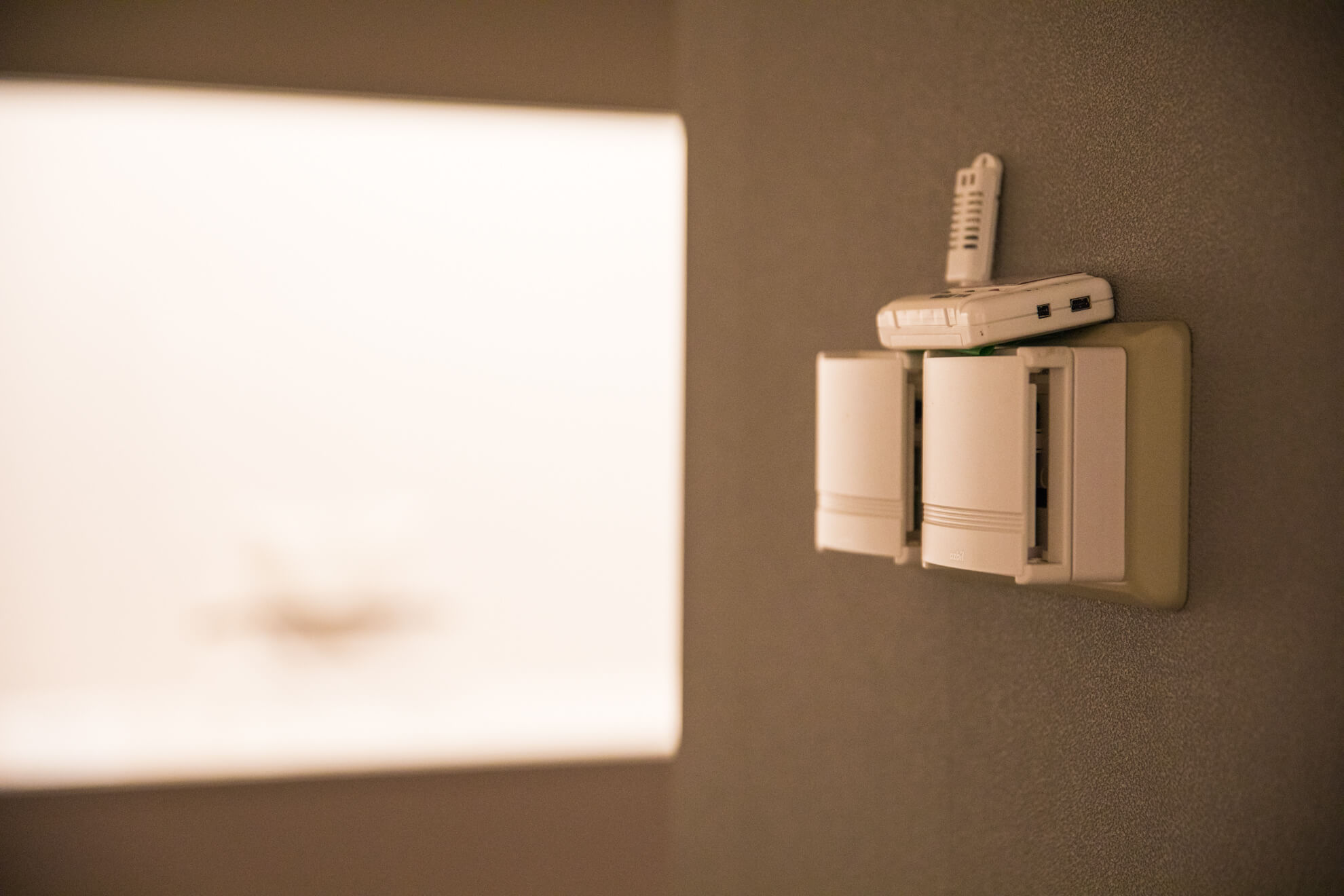
Q: Is it common for museums to take environmental measurements such as temperature and humidity when introducing new equipment during renovation?
Yes, after all, if harmful substances are released from any of the new construction materials or equipment, there is a risk that the items on display may be harmed or damaged. Especially in the case of new construction, there needs to be a waiting period to allow for chemical substances to come out of the wall materials before opening.
Q: Please tell us about which models you are using and where they are being used.
We are using 14 units of model TR-72Ui for temperature and humidity. We have eleven units placed in the first and second floor exhibition halls and in the cases throughout, as well as, three units in our storage facility.
Q: How often do you download the recorded data and check it on your PC?
We download once every two weeks, but we also check current measurements on the LCD screens while walking through the exhibition rooms every day and check what the temperature and humidity are in the rooms and in the cases.
Q: Are there standards for temperature and humidity for each exhibition room and display case?
There are no features for adjusting temperature or humidity in the cases. We control the temperature and humidity of the rooms with the air conditioning units and the cases are extremely air tight and made with humidity control material, so the humidity and temperature within the case is not susceptible to great or rapid changes.
We try to keep the temperature at around 20°C± 3°C (from 63°F to 73°F). But that changes depending upon the season. For example, in summer it gets to be about 23°C to 25°C (73°F to 77°F) and in winter it can dip a little below 20°C (63°F) sometimes.
The ideal humidity is 55%RH. Higher humidity is not good for paper documents and lower humidity is not good for lacquered items. In higher humidity lacquer solidifies but when in lower humidity it tends to loosen up. So, under rapid changes in humidity lacquer cracks and changes shape. Also sudden changes in humidity will cause condensation on anything made of metal. We have items made from several types of materials, and the ideal humidity differs depending on the material, so there is no choice but to try to keep all the items within a suitable range. 55%RH is within a suitable range for all of our items.
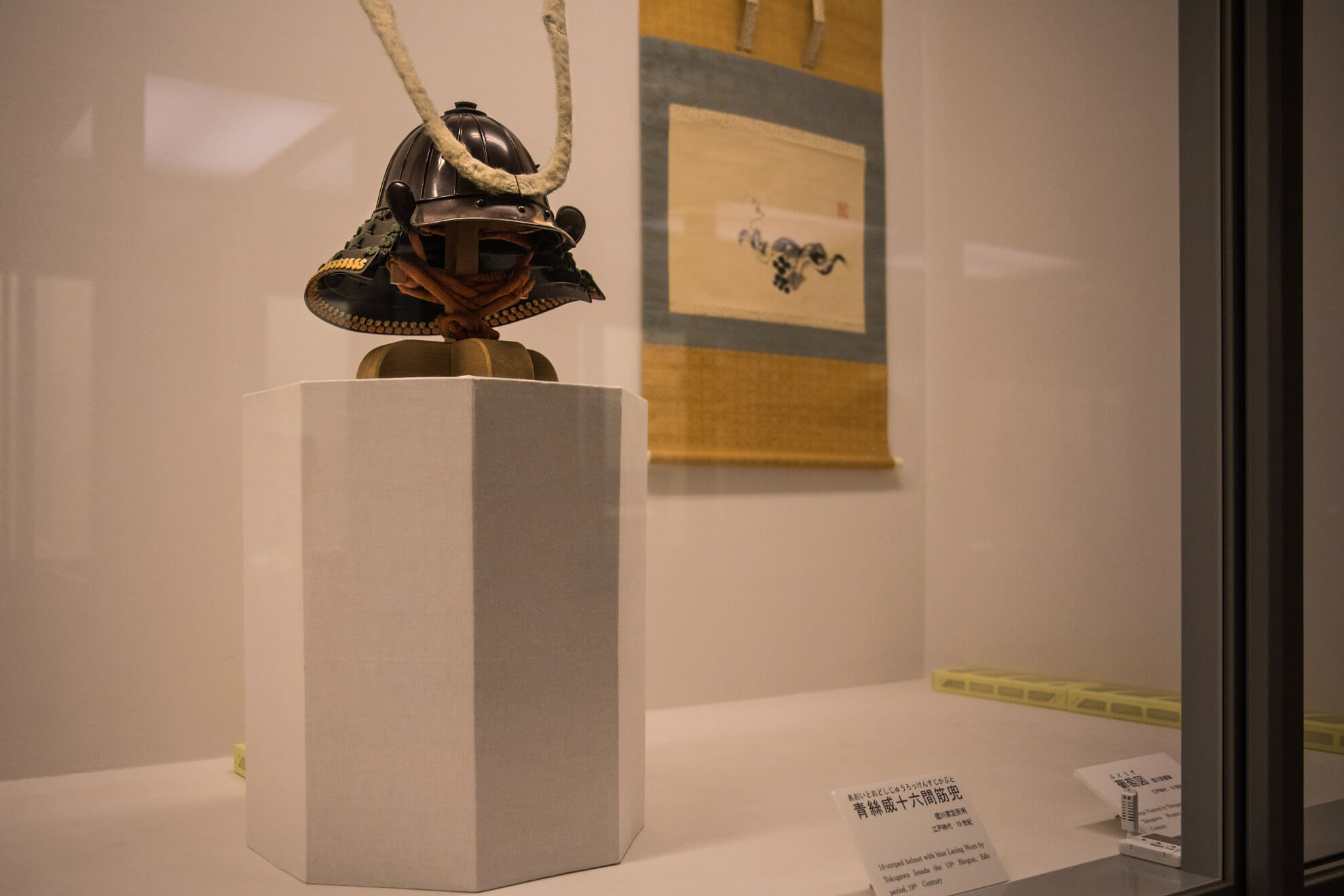
―― It must be hard to maintain 55%RH in winter though….
Yes, it is. In winter if we do nothing the humidity can easily go down below 40%RH, so in the morning when we open up we set the air conditioning to humidify the rooms and wipe down all of the cases with wet cloths to increase the humidity.
Q: So you need to take care more about humidity rather than temperature?
Yes, for us humidity is a big concern. If there aren’t any sudden changes in temperature, the usual changes during the four seasons are acceptable. It is sudden changes, whether in temperature or humidity, that cause stress to the materials. It is my wish to keep the materials safe from environmental stress. And that is a major reason why we use the data loggers to regularly check up on measurements.
Q: Why are you downloading and checking the data once every two weeks?
We are collecting data to look back on whether there were any sudden changes in temperature or humidity. Ideally, when looking at the graph, it would be best if the temperature and humidity data were both in straight lines. However, in fact due to fluctuations in temperature and humidity the graph can be quite jagged. So we need to download the data to analyze when and by how much the temperature and humidity rise and fall.
Q: How do you check the causes of big changes in temperature and humidity, such as relationship to changes in weather and so on?
The museum keeps a journal every day, so we can easily see the weather and other info recorded there. If we notice any unexpected fluctuations in the graph, first we will look the weather records. In addition to the weather, if many customers come in at once, the humidity will rise by about 10% RH, or if we open a case to change a display, there will be a change in humidity. So if when checking the data we see some drastic fluctuations in a graph we will always look into what may have been the cause.
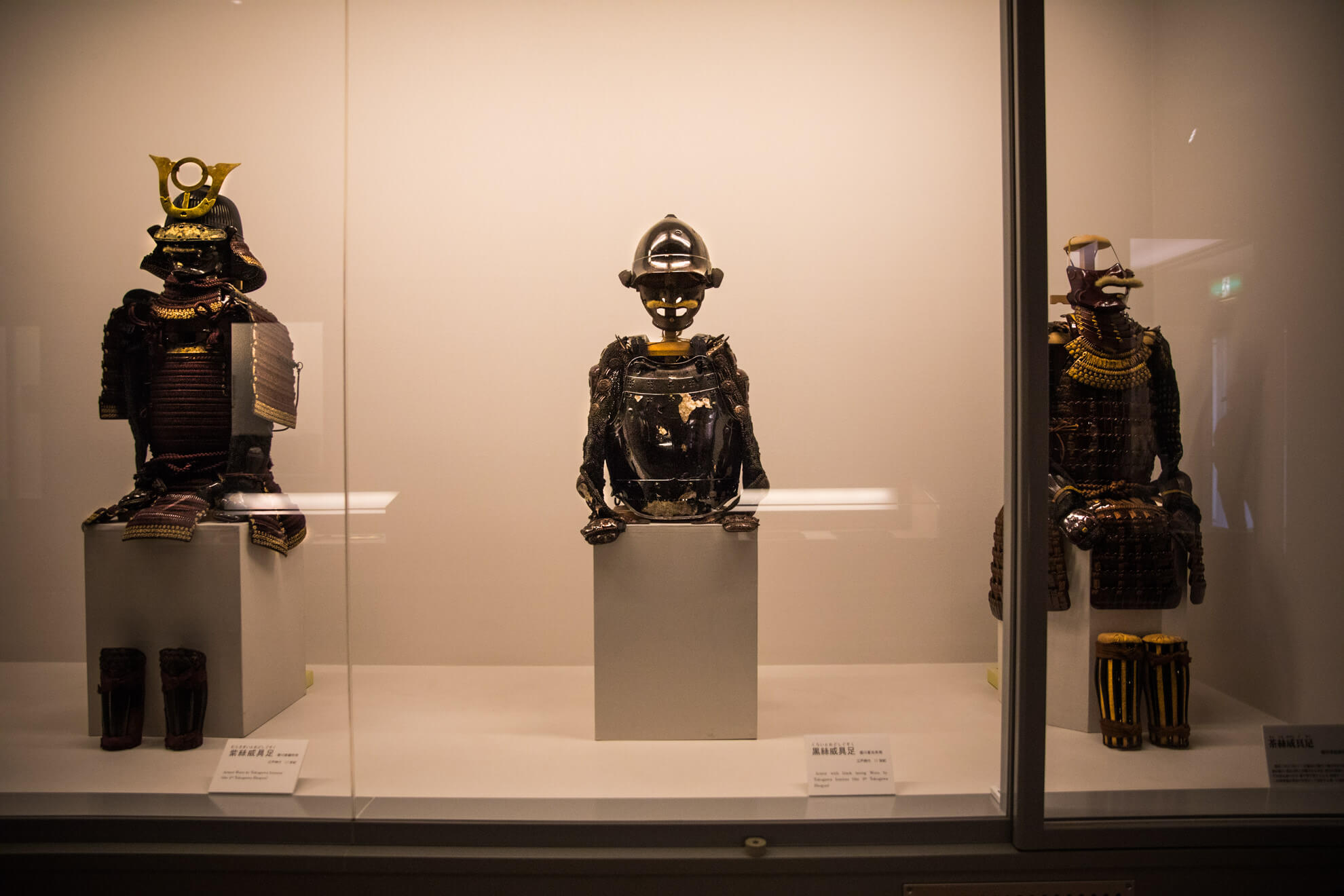
Q: So by identifying the probable causes, are you able to take precautions to prevent sudden fluctuations in humidity?
Yes, when the number of people entering the museum increases or when the weather is changing, we can turn on the air conditioning or turn it off early and help to avoid sudden changes as much as possible.
While making our rounds within the building, we also check the data logger’s LCD and adjust the air conditioning if we think it is warranted. Anyway, we do our best to make sure no sudden changes occur.
Q: Even if you take such great care and items are stored in a relatively stable temperature and humidity environment, is it still impossible to avoid age-related deterioration?
Yes it is difficult to avoid. Although it is possible to reduce the speed at which the materials deteriorate due to the environment, there is always constant stress and tension placed on the items on display. For example, there are documents that should not be exposed to harsh light for extended periods, but without light the items cannot be seen.
Q: So in addition to temperature and humidity, you just mentioned light, do you also measure other items such as illuminance?
We can easily adjust the light intensity in the case, so I don’t feel the need to measure the light much right now. All of our paper materials are already displayed under reduced light intensity. Before the recent renovation, we used a special fluorescent lamp that cut ultraviolet rays for works of art, and because it had a reddish tint, the whole room was dark and a bit scary. After renovation, the LED lighting was changed to a whiter one, so it is brighter than before, but with the same light intensity, so there is less concern about light than before. However, despite adjusting the intensity we still don’t allow some materials that cannot be exposed to strong light to be displayed for extended periods of time.
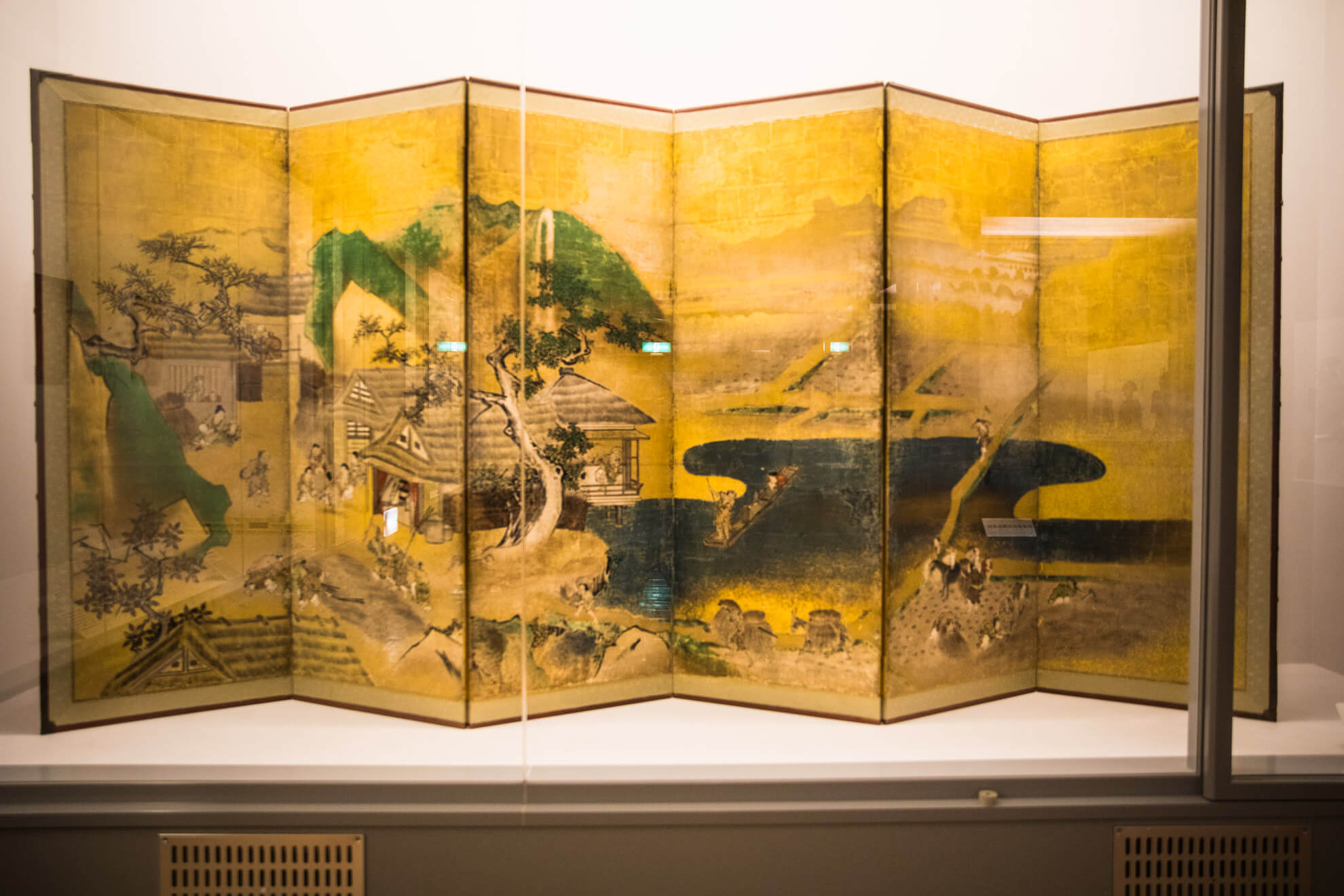
Q: Do you regularly conduct environmental surveys of chemical substances in the air?
Because the museum has no holidays, it is difficult to do a solid environmental survey.
Recently, we have had a lot of companies approach and ask “How about doing an environmental survey?” I think it would be great to learn more about what can’t be seen by the naked eye.
The meaning of environment may be different, but here in the mountains we have a danger of insects coming into the museum and causing damage. Of course some insects eat paper, so when opening or closing the case to change the display we need to make sure there are no insects around that may enter the case. Even if we pay close attention to prevent them from coming in at the entrance, some insects stick to customers and come into the exhibition room. It is an everyday battle with them.
Besides that, as we are near the sea, salt damage is a serious threat. The air conditioning system employs filters to prevent salt damage, but since salt is one of the greatest enemies of exhibits like ours, we need to be extremely careful.
Q: Do you open the display cases and take out the data loggers every time you collect the data?
We carry a laptop around, open the case and download the data on the spot. We go around in the morning before visitors come or in the evening after they go home; it usually takes about 30 minutes.
―― Actually I should tell you that there is an IoT compatible successor model to TR-72Ui, and it can upload data automatically to our free-of-charge cloud-based web storage service. If you have a wireless LAN, then you can check temperature and humidity in a graph without ever having to open display cases or manually connecting data loggers to your laptop. And if you set upper and lower limits you can receive a warning notification by e-mail when the temperature or humidity changes quickly and goes above or below the limit you set.
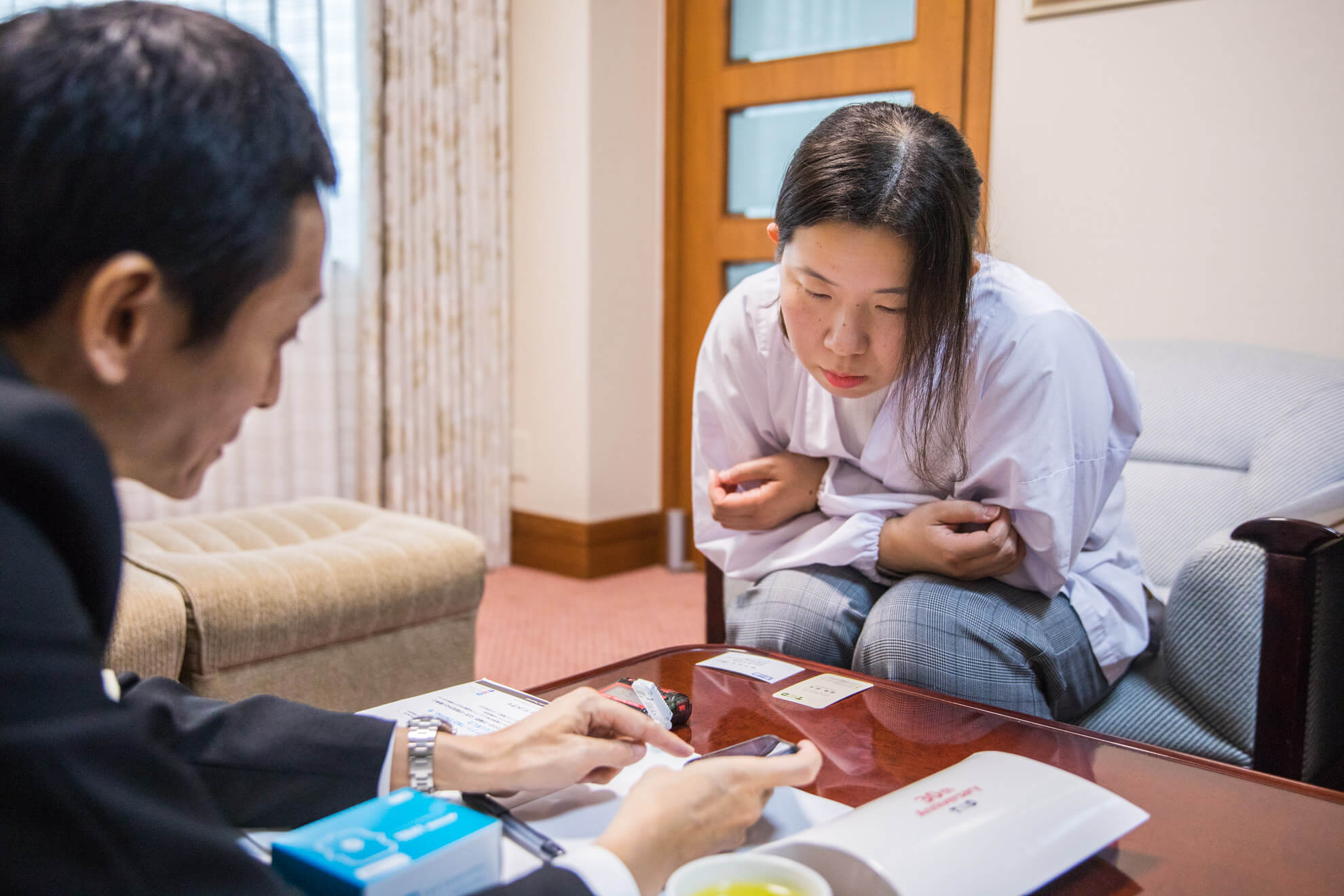
Being the good salesman, I was carrying one of our new model TR-72wf for wireless LAN, so I explained the new features and about our cloud storage service called “T&D WebStorage Service”.
―― Also you should know that we will be offering a new model in Feb 2019 that will include Bluetooth LE communication technology. That will allow you to make settings and check data directly from your smartphone or tablet.
Wow, you are really moving ahead!
We now have Wi-Fi here in the museum for the staff, so that is definitely something we could use. When we first started using T&D loggers we didn’t have any LAN network in place but now we do so I think we could surely use something more convenient like this.
The loggers we are using now were purchased five years ago when the renovation took place. At that time another curator and I were in charge of the data collection, I remember installing the software and setting-up everything myself.
To be honest, at first, I did not care much about the temperature and humidity data. But, gradually as I became more and more involved in various jobs I realized various correlations and connections between the data and other things. I think that made me take the data more seriously. I really started checking the data in detail in just the past year or two.
―― I guess in some cases people feel a sense of peace and safety just by installing the loggers and sort of just let them sit without taking the data very seriously. I get the feeling that is not the case here and that you are really using them to their potential.
I look at my data loggers every day! I am always checking the battery signs to check if they need replaced. And always take care to replace them as soon as possible.
After coming to work and opening up the museum, one of the first things I do is check the loggers. Especially on days when the weather is in flux the temperature and humidity in the building changes easily as well. On days like that I try to go around to all the rooms and check the loggers in the cases every thirty minutes or so. Other staff member also say that they look at them too, so I would say just about everyone is checking up on them. I hear them asking each other what the temperature is and telling each other that the humidity is such and such a percent so maybe we should do this or that.
I don’t know how we would do it without the T&D loggers. They really do help us and we are grateful.
―― No really thank you for using them and also thanks for taking the time today to talk with us.
It was really fascinating.
After the interview was over, Ms. Miyagijima took me for a tour around the grounds of Kunōzan Tōshō-gū Shrine. It truly is a fascinating place and she gave me some wonderfully detailed explanations about the swords, information on the shrine, and shared stories of some of the interesting history buffs who have visited here, but I cannot write it all here.
Above all I found that the crowd funding story was interesting for me. Before interviewing her, I thought it might be interesting if there was some kind of mismatch between the historical relics and the modern day data loggers. Indeed this 400-year-old venerable shrine seems to be preserving tradition while actively incorporating new things and technology. It seems that state-of-the-art technology and modern day services are making it possible for various cultural and historical materials, such as the swords and armor, to be properly stored, restored and handed over for the next generation to cherish. In that sense, it seems quite natural that IoT based T&D data loggers are a perfect match for helping to lead the way.
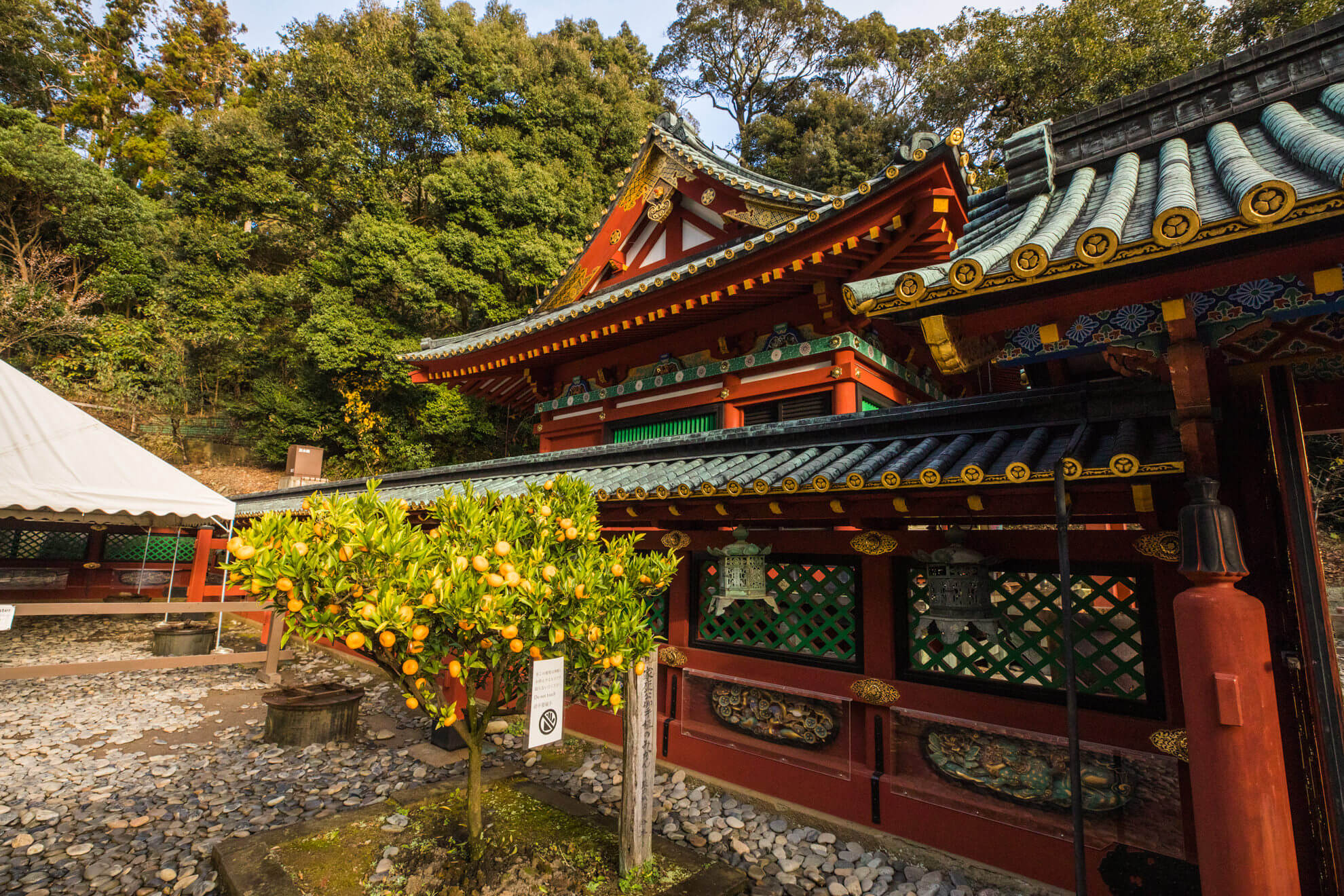
Go to Kunozan Toshogu Shrine Website
Check out our new TR-7wb Data Loggers with WLAN and Bluetooth
